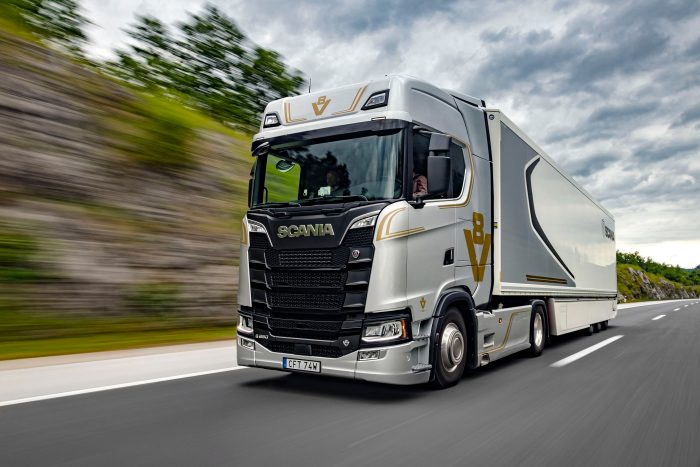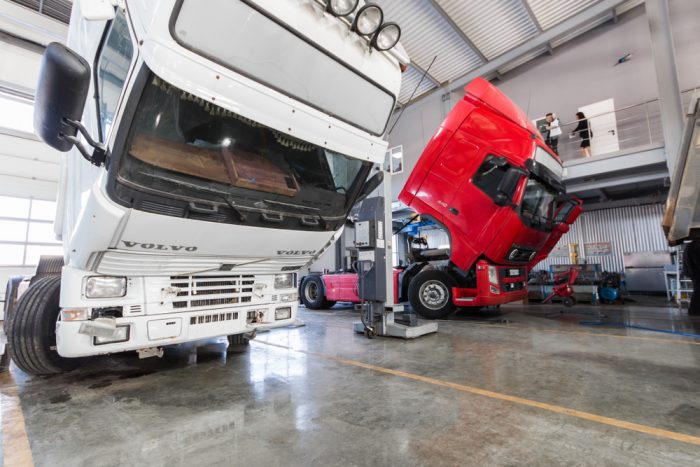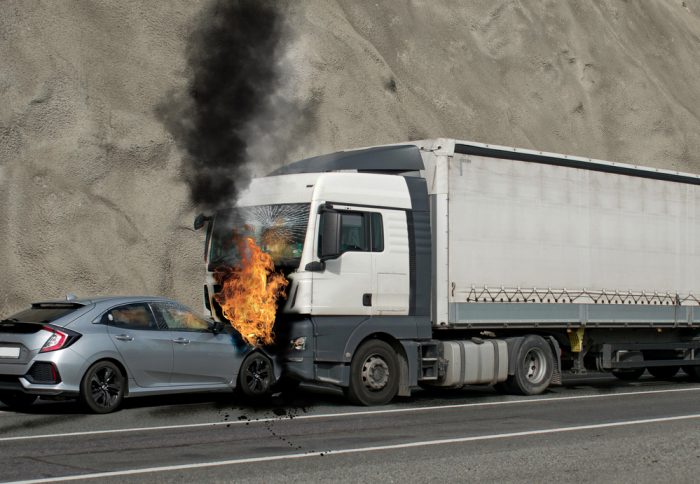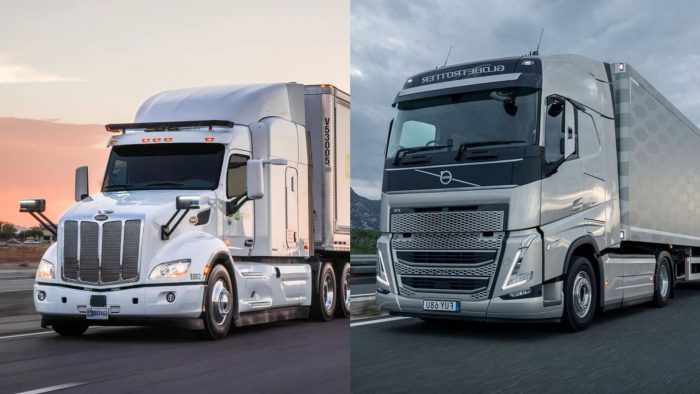The answer to why European trucks have flat faces and North American designs do not is the story of the unique differences between the two continents.
Revered in pop culture and throughout history, giant, long-nosed semi-trucks are as American as apple pie. Seemly customized for every occasion, they travel the millions of miles of roads and highways that connect the continent from coast to coast.
On the other hand, flat-faced European trucks typically travel shorter distances, often on narrow roads, and are subject to more strict regulations when compared to North American trucks.
In this article, we explore the reasons why semi-truck design looks so different on the two continents.
Pros and cons of flat-faced trucks
The flat face of European trucks, where the cab sits on top of the engine, is a notable departure from the familiar elongated semi-truck designs we have in North America.

But like most things, there is a good reason for the differing designs. Understanding the selective pressures that lead to a flat-faced truck design is key to understanding the differences between European and North American trucking.
In Europe, you usually see cab-over-engine trucks or “cabover” trucks. The result is a flat front and a cube-shaped design of the power unit.
Benefits of a cabover truck design
The square shape of the cab makes the truck easier to park because the driver can better estimate the distance in front of the engine. This is ideal if space is at a premium, which is often the case in historic European cities.
Finally, cabover trucks also offer better maneuverability because they are more compact — which is crucial for navigating the tight urban spaces and narrow country roads commonly found in Europe.
Downsides of cabover truck design
Unlike their North American counterparts, the cabover design forces European truck drivers to sit directly over the engine for hours. This makes the ride less comfortable and makes getting in and out of the cabin more difficult, given the added height in this design.
Conversely, In North America, truck cabins have a long nose, which can easily reach 20 feet long, and are more comfortable inside, as the driver sits behind the engine. The North American designs also allow for more living space. American truckers can convert their trucks into relatively large living areas, with beds, storage space, fridges, and other amenities that would not be possible in a European COE design.
Furthermore, having the cab directly over the engine makes maintenance more difficult. In a cabover design, the entire front of the truck must lift to access the engine.

Finally, the most significant advantage of North American truck design is the additional safety provided to the driver in the event of a collision.
Having the engine at the front of the truck creates a crumple zone, absorbing most of the impact of a head-on collision. This gives the driver added protection when compared to the cabover design.

Truck length restrictions
Another reason for the cabover design of European trucks is regulations. In Europe, semi trucks usually do not exceed 18.75 meters (61.5 feet) in length.
Cabover trucks were once popular in North America when the overall length of a truck was restricted to 65 feet. But in 1976, those restrictions were lifted, and cabover trucks were largely replaced by the more familiar, longer nose trucks we have today
Since Europe still restricts overall truck length, having a shorter power unit means you can have a longer trailer — maximizing the volume of goods you can carry.
In other words, European trucks sacrifice driver comfort to carry more cargo. But since they typically have shorter trips than North American truckers, this trade-off seems to be the optimal configuration.

Shape of an American semi-trailer VS EU semi-trailer
Why European trucks have flat faces summary
In short, North America is a huge landmass. Our trucks are free from the length restrictions their European counterparts must adhere to. Therefore, North American truck designs prioritize comfort since their operators must travel longer distances on wide and straight highways and roads.
Conversely, European trucks face size restrictions, narrow roads, and overall shorter hauls. Designers in Europe choose to prioritize cargo space and maneuverability over comfort.










